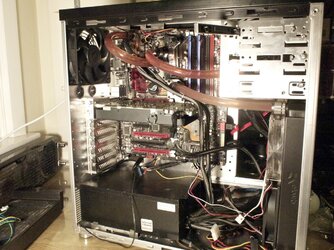- Joined
- Jul 14, 2002
We've all been misled by action movie torture scenes involving 12V car batteries and jumper cables attached to men's nipples.It was always understood to me that its the amps that will kill you, not the voltage.
A teacher once told me it was safe to stick fingers into a wall outlet that also had a toaster plugged into it because current took the path of least resistance. At another time, that teacher said light took 1/113 of a second to travel, regardless of distance. Master's degree, but not in science, engineering, or math.
